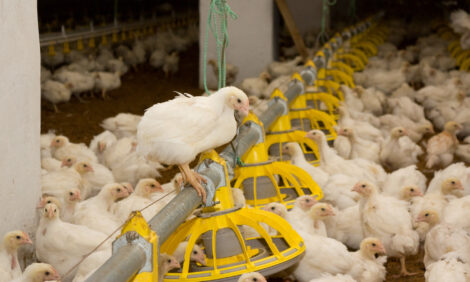



Research enables food sector to reuse water to wash chicken feet
Research from the Technical University of Denmark shows that it is possible to clean chicken feet using 50 percent less water and that cleaning water can be reused in cooling systems without compromising on food safetyThis year's bone-dry Danish summer has made it abundantly clear that water is a valuable resource. The food industry is one of the industries that depends on access to water in large quantities, as it uses plenty to manufacture products and clean machines and facilities.
In the quest to reduce water usage and thereby make production processes more environmentally friendly and cheaper, a number of Danish food producers have entered into a public-private partnership with researchers from different institutions, including from the National Food Institute, Technical University of Denmark.
The institute’s researchers have helped several of the food producers in the partnership investigate how water that has been used once in the production process can be cleaned sufficiently so that it can be reused elsewhere in the process - without compromising food safety and while complying with relevant legislation.
Using less water to clean chicken feet
Washing of chicken feet, which is a popular product on the Asian export market, is one of the water-consuming production processes that the National Food Institute - along with colleagues from the Technological Institute and the company - has helped to make more efficient without undermining food safety.
The researchers have documented that the water used in the last rinse of a batch of chicken feet can be cleaned through filtration and then reused in the first wash when cleaning the next batch.
In dialogue with the Danish Veterinary and Food Administration, the project team has investigated the regulatory and microbiological challenges and concluded that recycling and reusing the water does not present a problem for the quality and safety of the final product. This initiative has led to savings of about 50 percent of the original water consumption.
Reusing process wastewater as technical water
Researchers from the National Food Institute have also studied scenarios where process wastewater from food production or cleaning first goes through a treatment plant and then through different advanced treatment steps.
These steps include use of reverse osmosis or UV light to clean the water sufficiently so that it can be reused, eg, as technical water in cooling systems. The analysis has shown that reusing water is possible. However, to comply with the current regulations, the recycled water has to be piped through separate pipelines.
The researchers presented their results at the IFC World Congress on Process Water and Wastewater held in Denmark in November 2018.
Reuse must be carefully considered
If the different barriers work in the way the researchers assume, it is unlikely that the treated water will contain disease-causing microorganisms.
However, an analysis carried out in cooperation with DTU Environment shows that more research is needed to investigate whether the water contains harmful chemicals and to identify which techniques can be used to remove such chemicals.
The National Food Institute will continue to help businesses look into their ideas for water recycling and purification systems to ensure they comply with the relevant legislation, make relevant adaptations to their food safety/HACCP plans in order to maintain the highest food safety standards.
This work will identify possible problems that can be introduced through water recycling and how these are solved, as well as determine ways to monitor and maintain the various treatment systems.
You can read more about the aim of the partnership and its work packages on the DRIP website. The five year DRIP-partnership commenced in March 2015. Through its involvement in DRIP, the National Food Institute helps to fulfill the UN Sustainable Development Goal of ensuring responsible production and consumption patterns.








